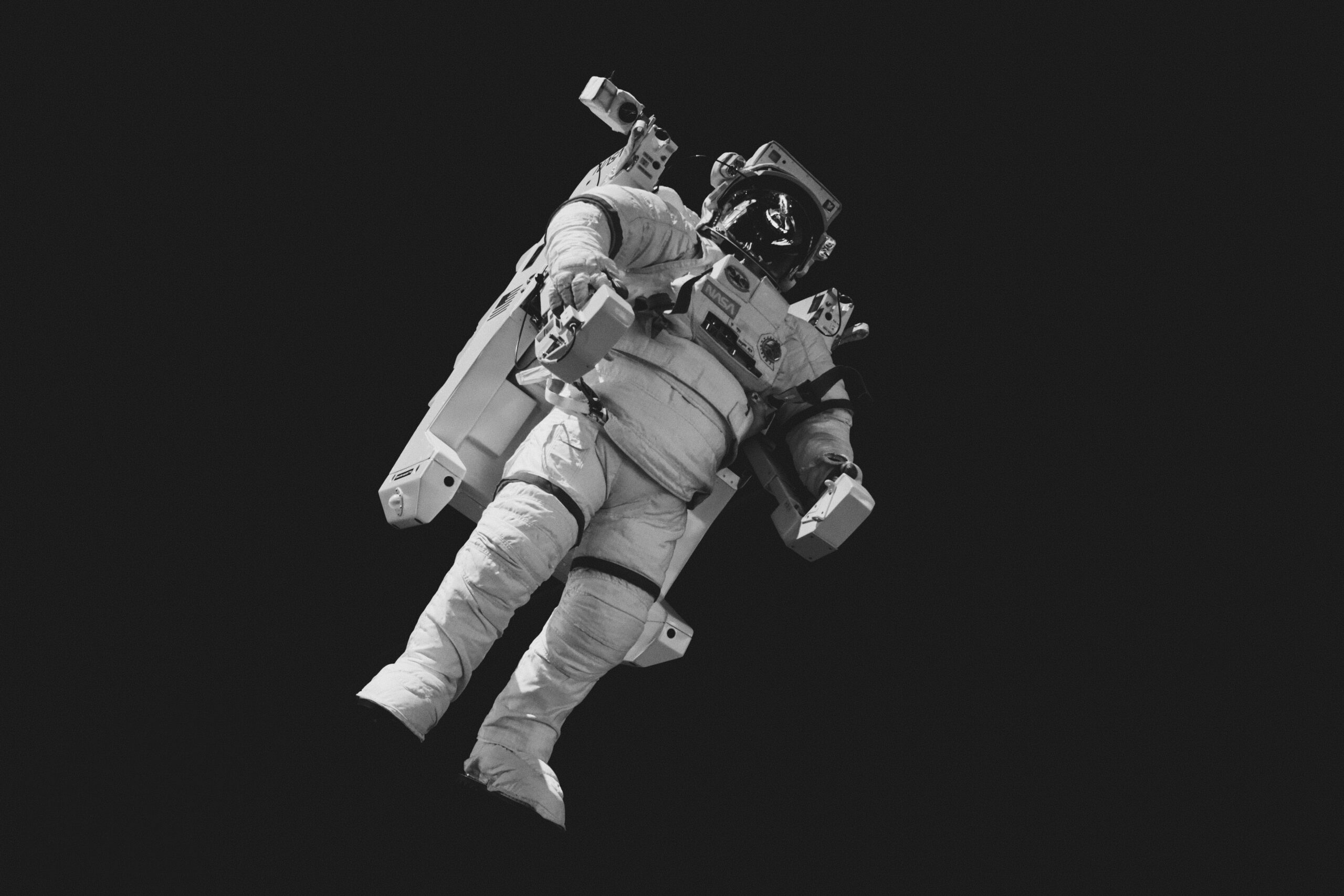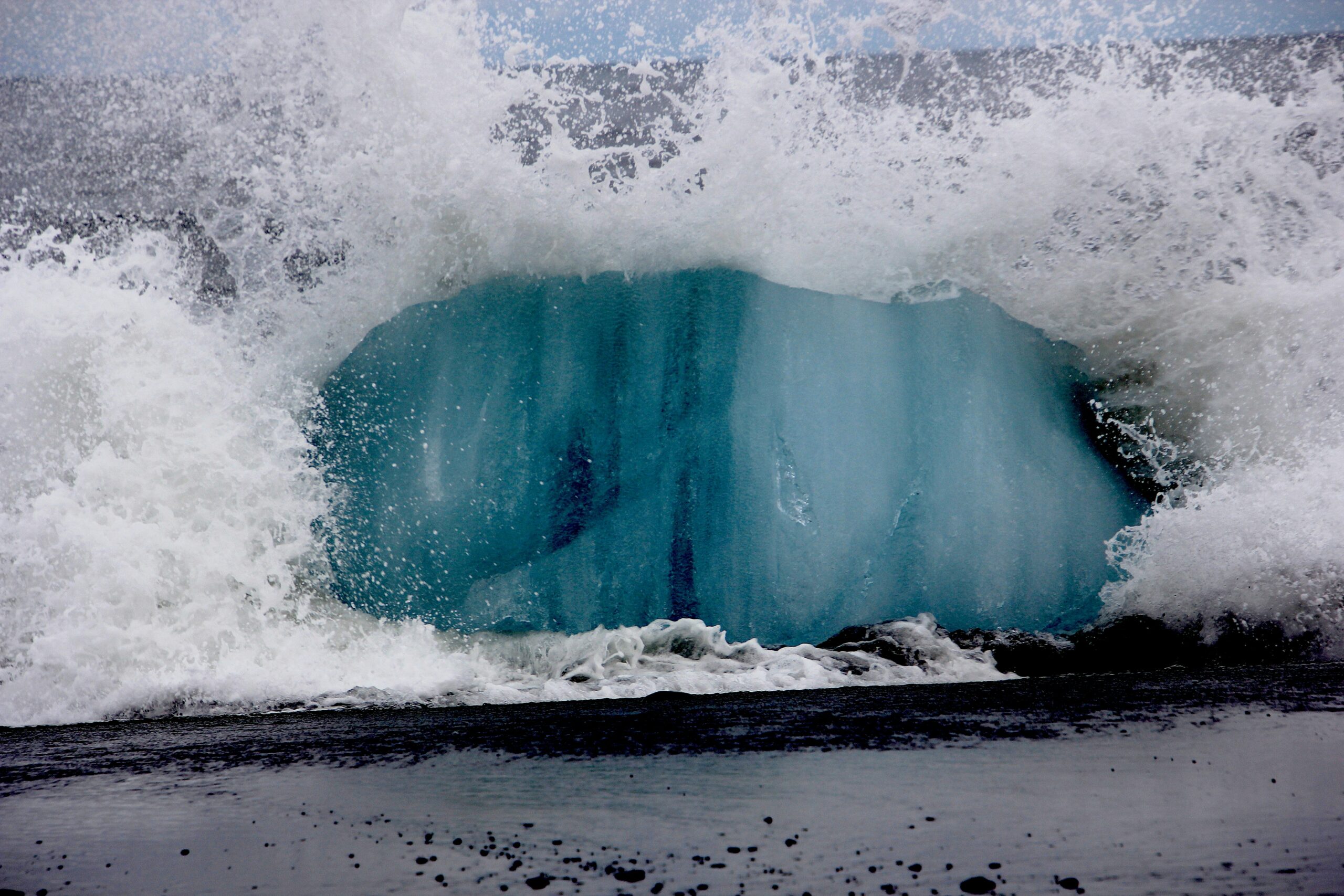Introduction to the Asteroid Threat
Asteroids, often described as remnants from the early solar system, are rocky bodies that orbit the Sun. Unlike planets, asteroids vary in size and shape and can be found primarily in the asteroid belt between Mars and Jupiter. However, a subset of these space objects, known as Near-Earth Objects (NEOs), has orbits that bring them close to our planet. NEOs include both asteroids and comets, and they occasionally pose a threat to Earth due to the potential for impact.
The concern surrounding asteroid threats has risen in recent years, especially with the identification of various celestial bodies that could intersect with Earth’s orbit. The significance of the year 2032 relates specifically to an asteroid designated 2021 QM1, which has garnered attention from researchers and space agencies such as NASA. This asteroid’s trajectory places it within a close range of Earth, presenting interest not only from a scientific perspective but also in terms of planetary defense strategies.
When asteroids enter Earth’s atmosphere, they can cause devastation depending on their size and the speed at which they travel. Smaller asteroids typically disintegrate upon entry and may produce harmless meteor showers. In contrast, larger asteroids, measuring hundreds of meters or more, hold the potential to create significant devastation. Historical events, such as the impact that contributed to the extinction of the dinosaurs, serve as stark reminders of the potentially catastrophic effects an asteroid impact can have on life on Earth.
The focus on potential threats from asteroids like 2021 QM1 necessitates robust monitoring systems and adequate preparedness measures. NASA, alongside other aerospace organizations, has committed to vigilant observation and research programs to track these near-Earth detritus. By understanding the characteristics and movements of asteroids, scientists aim to develop strategies that will mitigate the risks these space objects may pose to our planet in the future.
NASA’s Detection and Tracking Programs
NASA employs a series of advanced detection and tracking programs designed to identify and monitor near-Earth objects (NEOs), particularly asteroids that may pose a threat to our planet. One of the key components of this effort is the use of powerful ground-based and space-based telescopes that capture images of these celestial bodies. For instance, telescopes such as the Pan-STARRS (Panoramic Survey Telescope and Rapid Response System) and the Catalina Sky Survey are pivotal in scanning vast areas of the sky, detecting asteroids, and collecting crucial data on their trajectories.
In addition to optical telescopes, NASA utilizes radar systems, such as the Goldstone Solar System Radar and Arecibo Observatory (formerly operational), to obtain precise measurements of an asteroid’s orbit and size. By bouncing radar signals off of an asteroid, researchers can generate detailed images and refine their understanding of its physical properties, which is essential for assessing potential risks to Earth.
NASA categorizes asteroids based on several parameters, including size, trajectory, and their potential impact risk. This classification system, known as the Palermo Technical Impact Hazard Scale, helps scientists determine the levels of urgency for monitoring specific asteroids. Objects are rated according to their likelihood of collision with Earth, enabling a more efficient allocation of monitoring resources.
The agency also employs sophisticated software systems, such as the Near-Earth Object Program and the Planetary Defense Coordination Office (PDCO), to analyze data from multiple observation sources. These programs incorporate predictive models that simulate an asteroid’s orbital evolution, allowing experts to foresee potential future encounters with our planet. As a result, NASA can effectively manage the growing number of discovered NEOs, enhancing our ability to protect Earth from the asteroid threat.
The 2032 Asteroid: Key Facts and Risks
In the realm of planetary defense, the 2032 asteroid presents a subject of considerable interest and concern. Officially designated as 2023 YW2, this near-Earth object (NEO) is projected to approach our planet on January 16, 2032. Scientists estimate its size to be approximately 210 meters in diameter, which positions it as a significant threat should it enter Earth’s atmosphere.
The asteroid is anticipated to travel at a speed of 29,000 kilometers per hour (about 18,000 miles per hour), a velocity that could amplify damage potential if collision were to occur. Its trajectory is currently being monitored closely; the asteroid will pass within 7.4 million kilometers (approximately 4.6 million miles) of Earth, which is well within the orbit of the Moon. While this distance may sound substantial, it is considered relatively close by astronomical standards, warranting rigorous observation and assessment.
Regarding the risks, scientists categorize 2023 YW2 as a potentially hazardous asteroid (PHA) due to its size and proximity to Earth. The implications of a potential impact could range from localized devastation to global ramifications, depending on the asteroid’s actual impact trajectory and structural integrity upon atmospheric entry. Risk assessments from NASA and other global space agencies have indicated a significantly low probability of collision, currently estimated at 0.00017 percent. However, even slight probabilities are taken seriously, given the potentially catastrophic results of an impact.
To mitigate risks associated with this space rock, ongoing studies are crucial. They focus on mapping the asteroid’s trajectory and characteristics as they evolve over time. Understanding these factors not only prepares us for potential outcomes but also enhances our capabilities in planetary defense strategies and technologies aimed at diverting any significant threats to Earth.
Potential Consequences of an Impact
The potential consequences of an asteroid impact on Earth can be devastating, drawing attention from scientists and policymakers alike. Throughout history, significant impact events have shaped the planet and its biological lineage. Perhaps the most notable instance is the Cretaceous-Paleogene extinction event, which occurred approximately 66 million years ago. This cataclysmic event is widely believed to have been triggered by a massive asteroid collision, leading to the extinction of nearly 75% of the Earth’s species, including the dinosaurs. Such historical precedents underscore the grave risk posed by near-Earth objects.
In a more contemporary context, the implications of a large-scale asteroid impact can be categorized into ecological, geological, and societal effects. Ecologically, an impact event could result in widespread fires, atmospheric debris, and a severe decrease in sunlight, disrupting photosynthesis and leading to a collapse of food chains. The initial blast could create a devastating shockwave, causing immediate destruction in the vicinity of the impact site, and potential tsunamis if the object strikes an ocean.
From a geological perspective, an asteroid impact could trigger significant tectonic activities, such as earthquakes and volcanic eruptions. The energy released during such a collision would cause considerable changes in the Earth’s crust and could result in long-lasting alterations to the landscape. The alterations in the climate would follow, possibly ushering in a new era of extreme weather patterns and prolonged periods of cold, often referred to as “impact winter.”
Finally, the societal effects could be equally catastrophic. The loss of life could be considerable, dependent on the size of the asteroid and population density at the impact site. Beyond the immediate fatalities, societal infrastructure would likely be disrupted, leading to economic collapse, mass displacement of populations, and challenges in global governance as nations grapple with the aftermath.
Mitigation Strategies Being Considered
In response to the potential threat posed by the 2032 asteroid, NASA, along with other space agencies and research institutions, is actively exploring various mitigation strategies. One of the primary approaches involves deflection missions, which aim to alter an asteroid’s trajectory enough to ensure it will not collide with Earth. These missions utilize several innovative technologies, each designed to interact with an asteroid in different ways.
One prominent method being researched is the use of kinetic impactors. Kinetic impactors work by sending a spacecraft to collide with the asteroid at high speeds, thereby transferring momentum and changing its path. This technique was successfully demonstrated during NASA’s Double Asteroid Redirection Test (DART) mission, where a spacecraft intentionally collided with the asteroid Dimorphos to observe the resulting change in its orbit. Such successful trials bolster the feasibility of using this technology as a viable countermeasure against the 2032 asteroid.
In addition to kinetic impactors, other technologies are being evaluated, including gravity tractors. This approach involves deploying a spacecraft near the asteroid that uses its gravitational field to gradually influence the asteroid’s trajectory. Though it requires more time to yield significant results compared to kinetic impactors, the gravity tractor method presents a non-destructive alternative that minimizes the risk of fragmentation.
Thermal techniques are also under consideration, where the objective is to alter an asteroid’s surface temperature. By using focused sunlight or nuclear devices, scientists aim to create a small thrust that could lead to a gradual change in the asteroid’s direction. These diverse strategies reflect the urgency and complexity of mitigating the threat of asteroids, highlighting the importance of international collaboration in researching and developing effective solutions.
International Collaboration in Asteroid Defense
The threat posed by asteroids to Earth has become an increasing concern within the scientific community. As a result, the importance of international collaboration in addressing this existential risk has emerged as a critical factor in enhancing planetary defense strategies. Countries and organizations across the globe recognize that an effective asteroid defense system cannot be successfully implemented in isolation and must involve a cooperative approach.
International partnerships, such as the United Nations Office for Outer Space Affairs (UNOOSA), play a pivotal role in facilitating communication and collaboration among nations. UNOOSA has been instrumental in promoting efforts to share information regarding near-Earth objects (NEOs), which include asteroids and comets that come within proximity to our planet. By establishing a network of data exchange, nations can collectively monitor, track, and assess the potential threats posed by asteroids.
In addition to UNOOSA, several space agencies, such as NASA, the European Space Agency (ESA), and other national organizations, have increased joint missions focused on asteroid tracking and mitigation. Cooperation in technology development, research initiatives, and joint observatory projects has led to the creation of robust early-warning systems, enhancing the ability to detect and characterize asteroids that may pose a risk to Earth.
Various international conferences and workshops are frequently organized to discuss advancements in asteroid detection, mitigation strategies, and policies for response to potential impacts. These forums foster collaboration between scientists, researchers, and policymakers, ultimately improving global readiness for asteroid threats. Such efforts highlight the necessity of establishing common protocols and sharing best practices to facilitate efficient disaster response mechanisms across nations.
In summary, international collaboration in asteroid defense is vital for effectively addressing the potential void in planetary safety. By pooling resources, knowledge, and technologies, countries can build a comprehensive framework to protect Earth from the looming threat posed by asteroids.
Public Awareness and Preparedness
Public awareness plays a crucial role in planetary defense, particularly concerning the potential threats posed by asteroids. Recognizing this vital aspect, NASA and various organizations have launched numerous outreach initiatives aimed at educating the public about asteroid threats and the importance of preparedness measures. By enhancing public knowledge, these programs help foster a sense of responsibility and community involvement in planetary defense efforts.
One significant initiative is the “Asteroid Day,” celebrated on June 30th each year. This global event promotes awareness about the asteroid threat and encourages educational outreach surrounding planetary defense. Various activities take place, including public talks, workshops, and interactive online sessions hosted by scientists and educators. Through these events, key information about asteroid detection, tracking, and potential impact scenarios are shared with participants, fostering a deeper understanding of the significance of preparing for such eventualities.
In addition to events like Asteroid Day, NASA also provides a wealth of resources that can be accessed online. Their website features informative articles, videos, and infographics that explain the nature of asteroids, their potential impacts on Earth, and strategies for risk mitigation. These resources are designed not only to educate but to empower individuals to take proactive steps in safeguarding themselves and their communities in the event of an asteroid threat.
Moreover, collaborative efforts with educational institutions and non-profit organizations further amplify outreach efforts. Programs are designed to engage students, encouraging younger generations to explore planetary science and understand the implications of asteroid impacts. By instilling awareness early on, these initiatives aim to cultivate a culture of preparedness for future challenges while ensuring that society remains vigilant in monitoring the skies for potentially hazardous asteroids.
Recent Developments and Future Investigations
Asteroid detection has gained significant momentum in recent years, particularly as experts focus on the asteroid expected to approach Earth in 2032. NASA, along with various international space agencies, has prioritized the development of advanced technologies aimed at enhancing our ability to detect and track near-Earth objects. Recent developments showcase a combination of new missions and technological innovations that are pivotal to this effort.
One of the notable advancements is NASA’s Planetary Defense Coordination Office (PDCO), which has been actively monitoring potential threats through observational programs. Enhanced radar systems and cutting-edge telescopes have been deployed to improve the efficacy of tracking and analyzing asteroid trajectories. The data gathered helps in assessing the potential impact and determining the necessary response protocols if needed.
In addition to observational efforts, missions like the Double Asteroid Redirection Test (DART) represent a significant leap in our understanding of asteroid dynamics. By deliberately colliding a spacecraft with an asteroid, researchers hope to understand better how to alter an asteroid’s course. Such experiments are crucial, demonstrating the capability to change the trajectory of an object on a potential collision course with Earth.
Future investigations are set to include deeper surveys aimed at identifying any smaller asteroids that might not have been detected yet. Programs are also being initiated to collaborate with global partners; this international cooperation enhances data sharing and collective planning for planetary defense strategies. Furthermore, upcoming satellite missions intend to provide real-time assessments of asteroid risk factors, which could lead to quicker responses to any emergent threats.
As research continues, staying abreast of these developments is essential for understanding how humanity can respond effectively to the asteroid threat. The combination of current and future investigations holds promise in securing Earth from potential harm posed by asteroids.
Conclusion: The Road Ahead
As we confront the potential asteroid threats on the horizon, particularly with heightened concerns regarding 2032, it is imperative to acknowledge the proactive measures being undertaken by NASA and other space agencies around the globe. The pursuit of advancements in detection technologies, improvements in asteroid tracking capabilities, and the development of feasible mitigation strategies illustrate a concerted effort to safeguard our planet. These initiatives ensure that we are not only prepared to identify future threats, but also equipped to respond effectively if necessary.
Investing in asteroid research is not merely a task for science organizations; it is a shared responsibility among nations and individuals. Countries must foster collaborations, pooling resources and knowledge to enhance global preparedness. By working together on projects aimed at planetary defense, nations can pave the way for a safer future. Such collaboration includes sharing data on asteroid trajectories, research findings, and potential mitigation techniques. Furthermore, increasing public awareness about the nature and impact of asteroids can foster an informed populace that supports ongoing research funding and advocacy.
The journey ahead is undoubtedly complex, but the importance of sustained vigilance cannot be overstated. Continuous monitoring of Near-Earth Objects (NEOs) is essential for early detection, which remains our best defense against potential disasters. As we draw closer to 2032, it is crucial that we all advocate for ongoing investments in science and technology, ensuring that our strategies remain robust and responsive to new developments in space. The commitment to protect Earth from asteroid threats must resonate within the hearts and minds of citizens and leaders alike, driving a unified approach to planetary safety.



